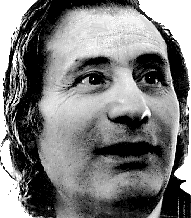
Schnittke on Kancheli
Today, in this time of struggle over new forms and meanings, many traditional aspects of symphonic organisation appear staid and redundant (the dramatic connotations of sonata form, contrast between different types of movement, composition by detailed thematic relationship, and so on). A symphony is primarily the free and unrestrained expression of a musical thought and only secondarily a linear form (although without any form at all a symphony cannot exist as such). Nowadays, a genuine symphony has no choice but to shape itself in an unpredictable, open-ended way - as, for example, do Shostakovich's Thirteenth and Fourteenth, Lutoslawski's Second, Berio's Sinfonia, and the symphonies of Rodion Shchedrin, Boris Tishchenko, and Avet Terterian.
So it is with Kancheli's symphonies, which are at once interrelated and completely different in form. Calmly self-sufficient, Kancheli has avoided both experimentalism and orthodoxy in forging his inimitably individual style. His most striking quality, however, is the rare gift of being able to suspend all sense of time. From the very first note we are released from our ordinary, everyday time-sense to float, cloud-like, in eternity. Composers with this rare gift tend towards a dissolution of "normal" time-proportions - either condensing our awareness around every second (Chopin, Scriabin, Webern) or stretching our attention-span to contemplative lengths by de-emphasising sequentiality (Schubert, Bruckner, Stockhausen). In Kancheli's symphonies, we find a union of both characteristics. In the relatively short period of 20-30 minutes of slow music, we experience a whole lifetime, an entire history; at the same time, the drag of time is absent - we glide high over centuries as if in an aircraft, with no sensation of speed.
This is particularly true of Kancheli's Sixth. The piece is permeated and bound together by the refrain of two solo violas, simultaneously a symbol of permanence and the recurrent link in a sequence of contrasting episodes: the wavering rhythm of the breath; a moment of deep meditation; a sudden convulsion; the tramp of an approaching cortège; the onslaught of a nameless force of evil; a whispered intimation; a terrifying eruption of blind power; the proud stoicism of resignation. All this appears before our ears in succession and (in some higher-dimensional counterpoint) at the same time. We know neither when nor whence it arose nor what it signifies (for it has been imparted to us with the mysterious incompleteness of life itself). Nevertheless, it is impossible to deny the innate truthfulness of this strangely beautiful, slow-flowing music, and inevitably we return to it to grasp what we failed to grasp the first time, to hear what we failed to hear the first time...